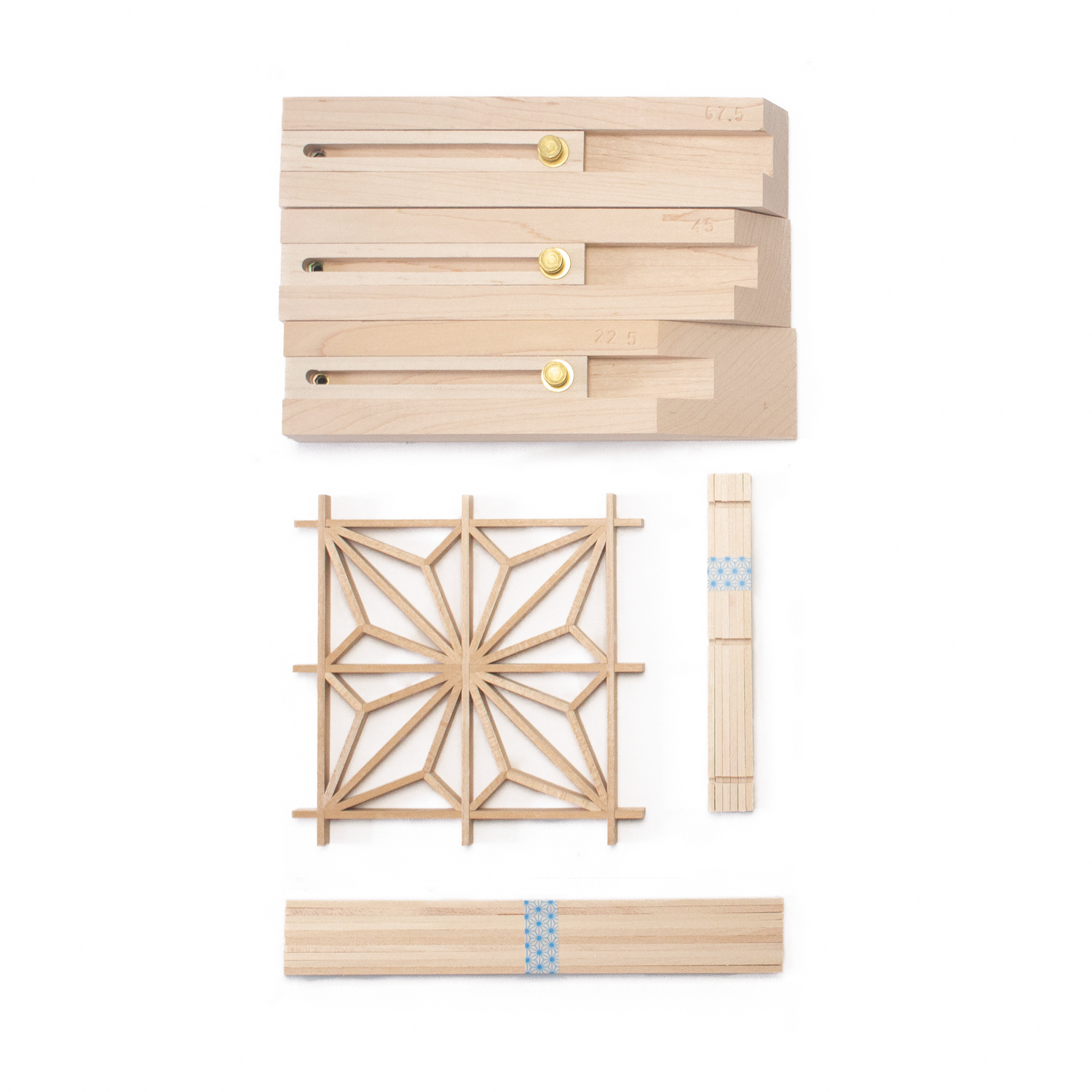Crafting kumiko demands a set of tools that blend tradition with precision. Here's an overview of the essential tools you'll need to get started:
-
Kumiko Saw: This a special type of saw designed for delicate cuts. These saws typically have a fine tooth count and a thin blade, allowing for precise cuts with minimal splintering or damaging the wood.
-
Chisel Set: A set of sharp chisels is essential for fine-tuning joints and removing excess material. Japanese chisels, known for their high-quality steel and ergonomic handles, are favored by kumiko artisans for their precision and control. Although Japanese chisels are great, any type of bench style chisel would work great. The main thing to keep in mind is that it's sharp.
-
Kumiko Jigs: Kumiko jigs are specialized fixtures used to cut precise angles on the ends of pieces to create different patterns. These jigs ensure consistency and accuracy across multiple pieces, which is crucial for creating seamless kumiko panels.
-
Marking Tools: Traditional Japanese marking tools such as marking gauges, marking knives, and precision squares are indispensable for laying out patterns, angles, and dimensions with precision.
-
Planes: Japanese hand planes, or kanna, are used to smooth and flatten the surface of the wood. They come in various sizes and although they aren't essential for getting started, they certainly make certain operations much easier.
-
Sharpening Stones: Keeping your tools sharp is crucial for precise cuts and clean joinery. Japanese water stones are preferred for sharpening chisels and planes.
-
Hammer or Mallet: A lightweight hammer or wooden aid in tapping joints into place without damaging the delicate wood fibers.
-
Finishing Materials: Sandpaper, scrapers, or planes are necessary for removing imperfections. Traditionally, kumiko is left with a hand planed finish. No oils or any type of finish is applied.
-
Safety Gear: Last but not least, don't forget about safety. Eye protection, dust masks, and hearing protection are essential when working with power tools and hand tools alike.
With these essential tools and a passion for precision woodworking, you'll be well-equipped to embark on your kumiko journey. Remember, mastering this ancient art form takes time and practice, but the rewards are truly breathtaking.



